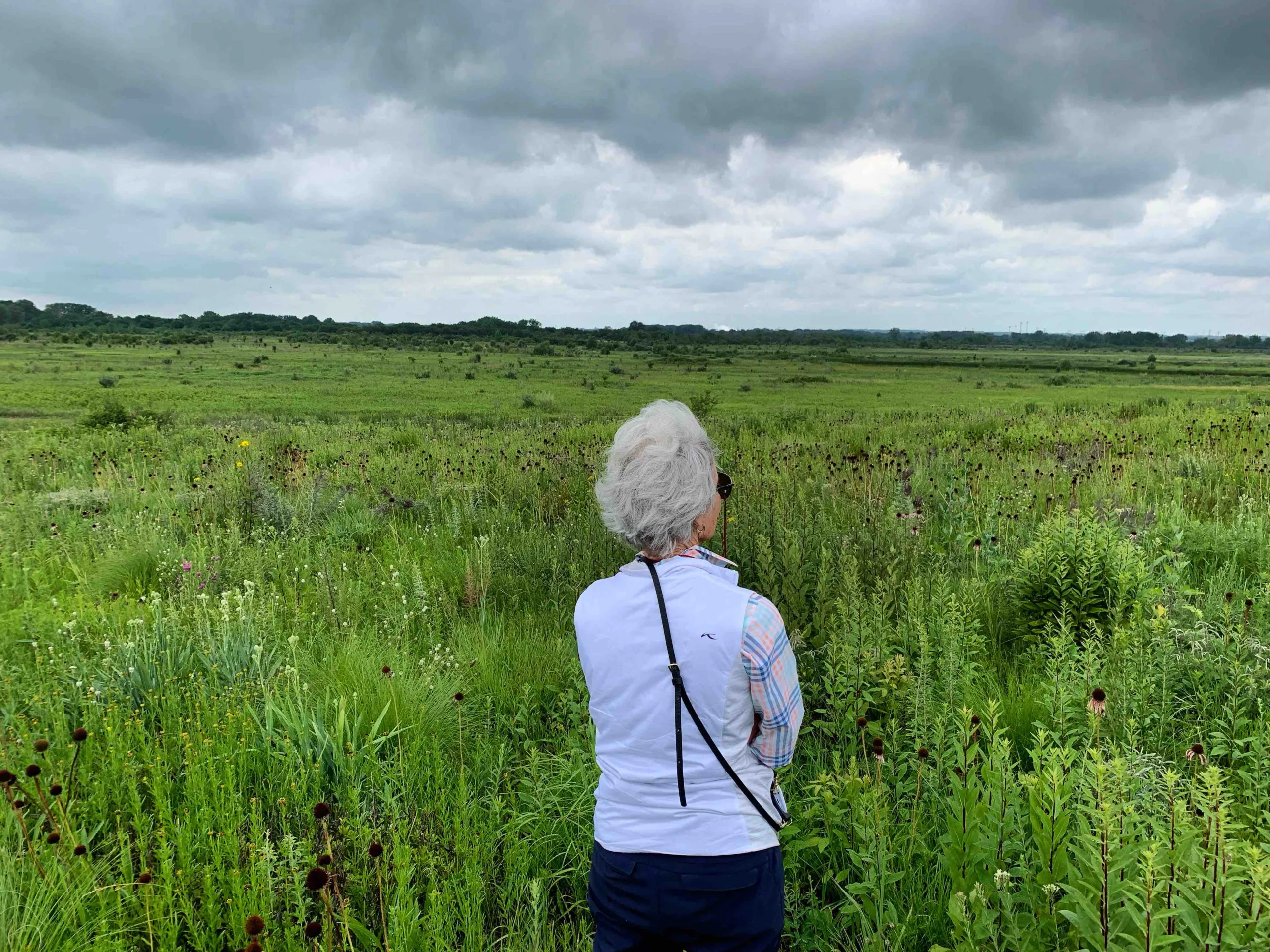
Getting to Know… Chicago Land Conservation
Discover more about our Chicago Land Conservation program and how we support natural and working lands protection.
Photo: Midewin Tallgrass Prairie is home to the largest prairie restoration project east of the Mississippi.
Our 5 Questions Getting to Know Series asks our program officers to provide an introduction to our work and insights about what is interesting and unique about each of our program areas.
By Rebecca Judd
What is the Foundation’s approach to its Chicago land conservation program?
We support organizations and programs that advance natural or working lands protection and stewardship across the greater Chicago metropolitan region. This approach includes an emphasis on:
-
-
- incorporating climate resiliency approaches and planning/prioritization;
-
-
-
- utilizing advocacy strategies to enhance conservation policies and programs, particularly at the state and local level;
-
-
-
- ensuring work is inclusive and provides both ecological and quality of life benefits, including for the diverse human communities in the region.
-
Chicago is highly urbanized, but there are still rare natural areas like wetlands, prairies, and forests that make up 11% of the region, providing vital ecosystem and community benefits. It often surprises people that the greater Chicago region is also comprised of nearly 50% farmland, which often buffers already protected areas and provides additional ecosystem benefits.
And with more extreme weather events and climate change impacts happening like severe flooding and droughts, it’s more important than ever to protect, restore, and manage these landscapes. It’s also vital to approach the work with inclusivity and equity at the forefront, especially engaging community partners to ensure that land conservation efforts are serving the diverse needs of the region.
But given the scale of need for land protection and restoration in the region, private funding only goes so far. This is why more robust advocacy engagement is required to create improved public conservation programs and funding.
Why the focus on the Chicago region?
Gaylord and Dorothy Donnelley were avid lovers of the outdoors and cared deeply about protecting land in the region where they lived and worked. Among their legacies is the place-based mission focus of the Foundation. Although the greater Chicago metropolitan area is a highly developed and urbanized one, there remain critically important landscapes and areas to protect for wildlife habitat, flood resiliency, and quality of life benefits for the diverse human communities that live in the region.
What else is unique about the Foundation’s Chicago land conservation program?
While we may not be the largest funder, we are one of the only place-based funders in the Chicago region that provides consistent and sustained support for land conservation organizations and efforts across the greater metropolitan area. We support a wide variety of work, ranging from smaller organizations like local land trusts and community-based organizations to larger national organizations with in-region conservation staff and programs.
-> Learn more about our grant guidelines
We also provide additional support beyond grants, including workshops and trainings that help our grantee organizations increase the impact of their work. We also facilitate convenings to help organizations collaborate with each other and connect them with other stakeholder partners and funders. We also pride ourselves on our commitment to partnership and approachability—we value open communication and establishing close relationships with partners in the field.
What is one really cool thing the Foundation’s land conservation program is doing right now?
As part of our commitment to providing an array of support beyond grants, we have engaged a “federal funding navigator.” As a result of the federal Infrastructure Investment and Jobs Act and the Inflation Reduction Act, there are once-in-a-generation funds available to support conservation and resiliency projects. The navigator is an outside team that guides our grantees on making the most of these funds while they are available over the next few years. We launched this initiative in 2023, and the experts we commissioned are helping organizations identify priority conservation opportunities that align with various federal funding buckets and navigate complex federal grant eligibility criteria. This will help bring home more federal dollars to support critically needed conservation projects in the region.
What are some of the biggest issues facing Chicago land conservation?
One of the biggest threats to land conservation in the region is urban development and land degradation. More land is being paved over for residential housing, e-commerce warehouses, harmful transportation projects, and other development. And most land in the region is privately owned, so we have to figure out how to better incentivize private landowners to protect their land from development, including farmland. This will take more comprehensive policy and land use planning advocacy. There also needs to be a lot more state and local conservation programs that can help fund conservation efforts. Without these investments, the less healthy landscapes we will have, also making our region less resilient to the higher temperatures and other climate change impacts like flooding and droughts.
Bonus Question: What do you recommend to better understand or appreciate the importance of land conservation?
Although Chicago is an urban region, there are still a lot of beautiful outdoor areas to enjoy and visit. There are many options to choose from, ranging from natural areas protected by local land trust organizations, county forest preserves or conservation districts, and some of the larger open space areas in the region like the Indiana Dunes State & National Parks in northwest Indiana and Midewin National Tallgrass Prairie in Will County, Illinois. All of these areas provide critical habitat for plants and animals, help clean our air and water, absorb stormwater flooding, provide access to nature, and enhance our quality of life. Go visit them and see firsthand why these treasured landscapes are so important to the health and vitality of our region!
Chicago Land Conservation Program At-a-Glance
Annual grant budget: $1.5 million
# of organizations supported: 30 per year on average
Program Officer: Rebecca Judd


Sorry, the comment form is closed at this time.